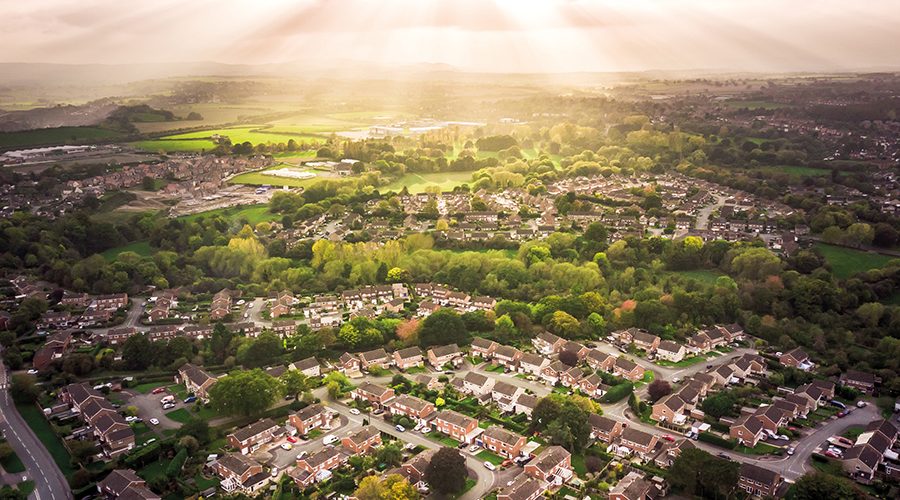The UK is currently in the grip of a major housing shortage, to the tune of 3.91 million homes. It is estimated that, to address this deficit – the largest on record – 340,000 new homes must be built every year until 2031. This means that the residential construction sector is under increasing pressure to deliver the homes the country so desperately needs, says Chris Coxon, Head of Marketing at Eurocell.
Eurocell
However, it’s vitally important that homes are not simply built in volume, without any consideration of the type of homes required. The National Housing Federation, for example, has said that the shortage will only be solved with the right mix of private properties, social rent, intermediate affordable rent and shared ownership properties, so that UK residents have access to affordable homes.
It is also critical that the homes of the future are created with supporting infrastructure to meet the needs and demands of occupants. For example, one issue that is often associated with modern developments is a lack of community spirit. We hear of neighbours co-existing but never getting to know each other, or elderly residents feeling isolated due to a lack of services in close proximity to their homes. The sense of ‘togetherness’ – or the glue that holds communities together – is increasingly lacking. And it’s highly detrimental to society as a whole.
This was backed up by our recent research which revealed that 66% of people feel that too much focus is placed on solely building homes, as opposed to rounded communities. Let’s look at the findings in more depth.
Building communities, not just homes
In our Future Communities report, we examined how the UK feels about the provision of services when it comes to building homes, alongside how they hope the communities of the future will develop. We drew on a survey of 1000 respondents, comprising an even split of social housing occupants, homeowners and private renters.
Over half of those polled stated that they feel that quickly building a high volume of homes negatively impacts community spirit. Clearly, this absence of a cohesive neighbourhood is an issue that impacts occupants across the board, including a third of respondents in social housing who said that the developments of the future need to be built in a way that encourages community spirit.
So, with the Government’s current pledge to build 300,000 new homes now needing to be exceeded to ensure that the housing deficit is erased, it is clear that there needs to be just as much focus on building communities as there is on building homes.
Developing services and infrastructure
Access to services such as schools and GP surgeries has a significant impact on social cohesion and helps communities to form. As the UK builds the number of homes it requires in the coming years, it is crucial to ensure that the services and infrastructures that people rely on in their day-to-day lives are also developed.
Indeed, in our report, 69% of people said they feel that not enough consideration is given to services and infrastructure during the planning process for homes. This led to 31% of respondents saying that greater consideration needed to be given to the design and build of multi-use buildings during the planning of new developments.
Clearly, more needs to be done to ensure that there are an adequate number of facilities, such as schools and doctors’ surgeries, available.
Again, social housing is significantly impacted, with 39% of people saying that building social housing developments with more facilities around them would make them more appealing. Looking at the types of services and facilities that need to be developed, 32% of people believe that not enough has been done to support the development of doctors, dentists and hospitals, with a further 31% saying they want to see more done to develop schools and nurseries.
Respondents also said that more should be done to provide parks (28%), leisure facilities such as sports and craft centres (26%) and amenities such as cafes (21%), highlighting further that communities cannot simply be created by building a high volume of houses with the surrounding area and facilities playing a major role in social cohesion. As a result, there needs to be greater collaboration between planners and service providers to develop the facilities that ensure fully functioning communities.
Gaining valuable insight
With such a shortage of available housing, there is a risk that the homes and developments of the future will be built too quickly and without proper consideration for the neighbourhood, they will either help to create – or hinder.
Where does responsibility lie? Naturally, with the developers, construction firms and architects; those that will be at the coalface of modern infrastructure and residential construction in the coming years. But we cannot forget the key role that Government must play in ensuring current and future regulation is fit for purpose. Nor should we underestimate the value of community residents themselves, whose views must be incorporated into the design of our built environment from the outset. Only when the sector takes a fully collaborative approach will the communities of the future be a success.










